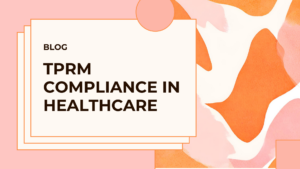With the rapid advancements in technology and the increasing demand for accessible healthcare, healthcare organizations must stay up-to-date with the ever-evolving HIPAA regulations. HIPAA, or Health Insurance Portability and Accountability Act, is a federal law that sets national standards for protecting the privacy and security of patients’ medical information. Failure to comply with HIPAA regulations can result in significant fines, civil action lawsuits, and even criminal charges. Therefore, it is imperative for healthcare organizations to remain aware and compliant with HIPAA regulations.
Introduction
To ensure HIPAA compliance, healthcare organizations must be intentional about adaptation and implementation. As patients prefer communication via text, email, and social media, being relevant and accessible to them is crucial. However, this can prove to be a struggle, especially when attempting to adhere to the strict rules of HIPAA. In this article, we will discuss some effective ways healthcare organizations can ensure HIPAA compliance while providing accessible healthcare to their patients.
Increased Awareness of HIPAA Compliance
To be HIPAA compliant, healthcare organizations must first be aware of the regulations and what it takes to be compliant. Many healthcare organizations have crafted HIPAA plans, which gives them the responsibility to be educated in and ensure HIPAA compliance is taking place within their office. Awareness can be achieved through employee training programs, regular reminders, and refresher courses.
Annual Risk Assessment
Under HIPAA security rules, healthcare organizations are required to conduct an annual risk assessment to identify areas of non-compliance. The assessment gives healthcare organizations the opportunity to have their office independently evaluated by compliance experts to identify any risks and vulnerabilities. By identifying risks and vulnerabilities, healthcare organizations can develop a plan that will fix the risks and make their office compliant.
Communication Device Regulations
Text messages, emails, social media, and other technological advancements offer convenient ways to communicate with patients. However, using these tools without proper HIPAA guidelines can lead to significant risks. Healthcare organizations must ensure that they are only communicating with the patient and not sending personal health information via these methods. Additionally, all employees should be trained on HIPAA compliance and have a thorough understanding of the type of information that can be sent using these devices.
Regular Testing and Scanning
Annual risk assessments are helpful, but healthcare organizations must also be intentional about regularly checking for vulnerabilities in their technological devices. Technology is ever-changing, and vulnerabilities can occur at any time. Regular testing and scanning are essential to ensure that nothing is getting into the system and patient information is protected.
Summary and Next Steps
In conclusion, HIPAA compliance is vital for healthcare organizations to protect patients’ privacy and avoid significant fines and lawsuits. By increasing awareness of HIPAA regulations, conducting annual risk assessments, adhering to communication device regulations, and regularly testing and scanning, healthcare organizations can ensure HIPAA compliance. By being intentional and educated, healthcare organizations can provide accessible healthcare while remaining HIPAA compliant.




